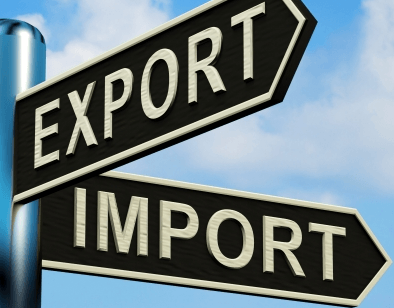Ghana records $584.5m trade surplus
 Ghana recorded a provisional trade surplus of $584.5 million for the first two months of 2018 on the back of higher export receipts from crude oil.
Ghana recorded a provisional trade surplus of $584.5 million for the first two months of 2018 on the back of higher export receipts from crude oil.
This compares with a trade surplus of $494.3 million recorded over the same period in 2017.
Speaking at a press conference on the development in the economy on Monday, Dr Ernest Addison, the Governor of the Bank of Ghana said the trade surplus was expected to translate into a current account surplus in the first quarter of 2018, and further into a strong external position.
He said Gross International Reserves stood at $6.9 billion, representing 3.8 months of import cover as at March 20, 2018 compared to $7.6 billion or 4.3 months of import cover as at December 2017.
Dr Addison explained that the drawdown in international reserves reflected seasonal foreign exchange flows, planned sovereign bond coupon payments and Energy Sector Levy Act (ESLA) related payments.
On the international market, the Governor said prices of Ghana’s main primary exports had rebounded over the first two months of 2018.
Crude oil prices have gained the most since the fourth quarter of 2017 reaching $69.1 per barrel in January 2018, but has since moderated on the back of increased production and rising US shale output.
Gold prices have also performed better, largely driven by a weak US dollar and steady purchase and holdings of gold by central banks.
Following some price depression in 2017, on account of excess supply, cocoa prices are gradually on the mend, driven by strong grind data from Europe, and renewed concerns of adverse short-term weather patterns across the West African sub-region.
Touching on the banking sector, Dr Addison said the ongoing regulatory reforms in the banking sector were to promote stability of the financial system and to properly position it to support the economic growth agenda.
He said the banking sector as a whole continued to be liquid, profitable and solvent with some modest gains in asset quality.
However, there remained few vulnerabilities and the Bank of Ghana expects banks to continue to implement their recapitalisation plans in line with the new minimum capital requirement.
He said the total asset base of banks increased to GH¢95.1 billion in February 2018 indicating an annual growth of 13.7 percent compared with the 15.3 percent recorded in December 2017.
The asset growth was mainly funded by deposits which went up by 12.6 percent on a year-on-year basis.
The industry’s average Capital Adequacy Ratio (CAR) improved to 19.2 percent in February 2018, reflecting efforts by banks to recapitalise.
Dr Addison said although the quality of loan portfolio remains a concern, the Non-Performing Loans (NPLs) ratio remained unchanged at 21.6 percent since December 2017 as banks continued to clean their balance sheets.
However, adjusting for loan loss provision, the NPLs ratio stood at 10.9 percent in February.
Provisional data on government operations indicated an overall budget deficit of 6.0 percent of GDP in 2017, against the target of 6.3 percent.
Total revenue and grants was 20.0 percent of GDP, below the target of 21.3 percent and total expenditures, including arrears clearance, was 26.0 percent of GDP below the budgeted estimate of 27.7 percent.
The total public debt declined from 73.1 percent of GDP in December 2016 to 69.8 percent of GDP (GH¢142.5 billion) at the end of 2017.
Of the total, domestic debt was GH¢66.7 billion and external debt was GH¢75.8 billion.
The maturity profile of domestic debt showed an increase in longer-dated instruments in line with Government’s debt management strategy particularly, the re-profiling strategy.
By end December 2017, the share of short-dated instruments in total domestic debt had declined to 18.0 percent from 37.6 percent in December 2016, while the share of medium-term instruments rose to 63.1 percent from 38.1 percent.
Source: GNA
